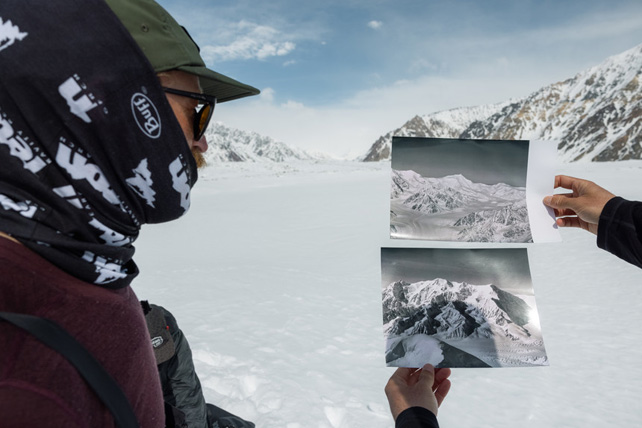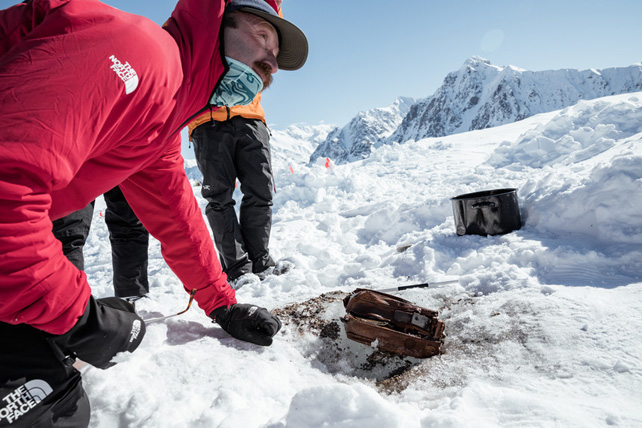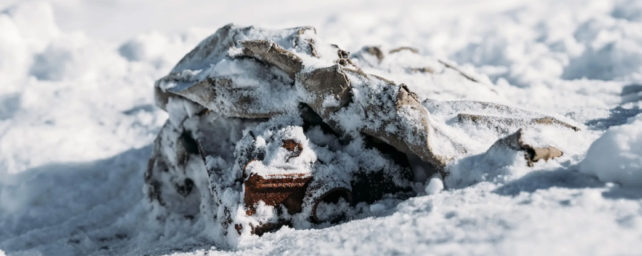In 1937, legendary aerial photographer and cartographer Bradford Washburn abandoned hundreds of pounds of camera gear, surveying equipment, and supplies when he ran into bad weather while exploring Canada's frigid Yukon region.
In August, 85 years later, a team of scientists and professional mountain explorers discovered the long-lost historic cache of gear buried in the ice on the remote Walsh Glacier.
Eight decades ago, Washburn and fellow explorer Robert Bates were attempting to climb Mount Lucania in the Saint Elias Mountains when bad weather forced them to leave the heavy camera equipment behind.
In late April 2022, professional big-mountain skier Griffin Post set out on a three-week expedition onto the glacier – located within Canada's Kluane National Park and Reserve – along with other adventurers and scientists, to hunt down the location of the cameras.
"I was hopeful, but I knew that it was akin to finding the proverbial needle in the haystack," Post said in a press release. "A lot can happen in 85 years on a glacier."
Dora Medrzycka, a University of Ottawa glaciologist, was tapped to travel to the site and map out the glacier, to determine where the gear could have moved over time.
"They essentially needed help to figure out how the glacier is moving and what's the best way of finding the cache," Medrzycka told Insider.
A team of glaciologists at the University of Ottawa helped the expedition remotely.

Upon arriving to the region, the team searched on foot, ski, and snowboard.
"We had an idea of where to start looking, but nothing very precise," Medrzycka said, adding, "We covered a lot of kilometers walking up and down the glacier. We had trouble finding it – we couldn't see it anywhere."
To try and get a sense of the original location of the camp, the team pored over photographs of the cache site that had survived Washburn's expedition.
The team didn't find the cameras until a second, shorter trip out to the glacier in August.
"We were pretty much close to giving up because all our efforts were just giving us nothing," Medrzycka said.
On the penultimate day of the trip, Medrzycka came up with a new theory about where the artifacts might be located.

Glaciers typically move at a constant rate from year to year, but Walsh glacier is a rare "surging" glacier, she said, meaning it moves faster for a year or two every few decades.
She noticed piles of debris had traveled the glacier's entire length, which she believed was caused by the surge. That clued her in on how and when the glacier had flowed in the past.
The observation allowed her to calculate a new estimate of where the items might be, which was three or four miles further down the valley and approximately 14 miles away from the spot where Washburn had left them.
Her hunch ultimately led the team to the missing gear. "It was an amazing feeling, and I felt relief that I didn't fail at finding the cache," Medrzycka said, adding, "It was an epic moment for everyone."
Weeks later, archaeologists from Parks Canada returned to the glacier with the expedition team to extract the camera from the ice. The team found a significant portion of Washburn's Fairchild F-8 aerial camera, with two motion picture cameras with film still loaded inside, hiking poles, tents, and other survival gear.
According to Medrzycka, the team knew Washburn shot images of the landscape before he abandoned his gear. Now they're planning to develop the decades-old film, hoping to salvage the images.
"What's really significant here is that this is new data that we had no way of having without finding that cache," Medrzycka said, adding, "We were able to trace the path that was traveled by the cache since 1937."
She said the findings could help scientists better understand how glaciers move, adding that "if we combine this information now with satellite data, we can try and figure out if and how the flow of this specific glacier, Walsh Glacier, has changed over the last eight decades."
This article was originally published by Business Insider.
More from Business Insider: